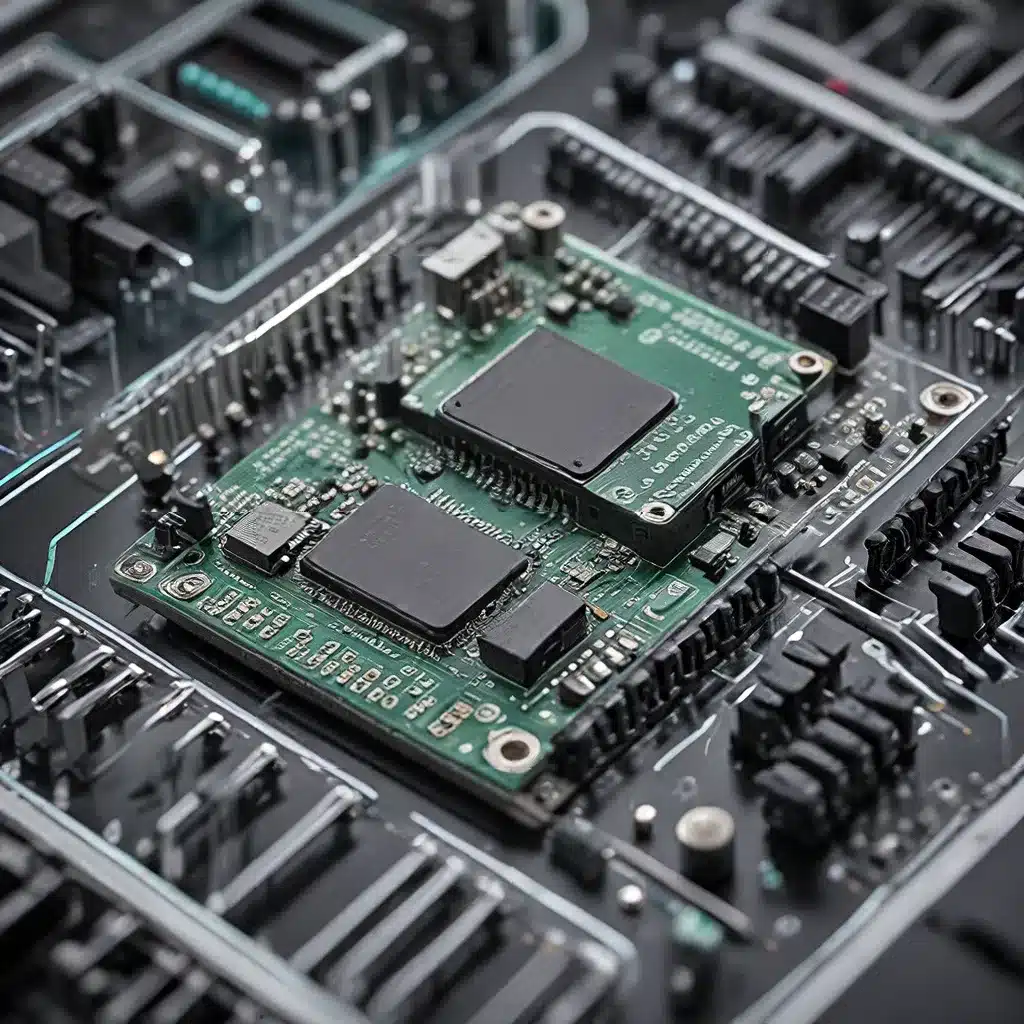
The Rise of Sensor Networks and Reconfigurable Hardware
In the rapidly evolving landscape of sensor networks and Internet of Things (IoT), the ability to adapt to changing operational requirements has become increasingly critical. Sensor networks play a pivotal role in collecting and transmitting vast amounts of data, enabling a wide range of applications, from smart cities and industrial automation to environmental monitoring and healthcare. As these applications grow in complexity and diversity, the underlying hardware and software infrastructure must evolve to meet the dynamic needs of the IoT ecosystem.
Enter reconfigurable hardware, a technological breakthrough that is transforming the way sensor networks are designed and deployed. Reconfigurable hardware, such as field-programmable gate arrays (FPGAs), allows for the dynamic modification of a sensor node’s functionality, performance, and power consumption to suit the changing operational requirements. This adaptive capability is particularly valuable in scenarios where sensor networks are expected to operate in diverse environments, handle varying workloads, or respond to emergencies.
Reconfigurable Hardware and Sensor Network Adaptability
Reconfigurable hardware offers several key advantages for sensor network design and deployment:
-
Flexible Functionality: With reconfigurable hardware, sensor nodes can be updated or reprogrammed to perform different tasks, such as data processing, energy management, or security protocols, without the need for physical hardware replacement. This flexibility enables sensor networks to adapt to changing operational needs, ensuring optimal performance and efficiency.
-
Dynamic Performance Tuning: Reconfigurable hardware allows for the dynamic adjustment of a sensor node’s computational power, memory, and bandwidth requirements. This enables sensor networks to scale their resources up or down based on fluctuating demands, ensuring optimal resource utilization and energy efficiency.
-
Improved Security: Reconfigurable hardware can be leveraged to implement robust security measures in sensor networks, such as cryptographic algorithms and secure communication protocols. By regularly updating these security features, sensor networks can better protect against evolving cyber threats and data breaches.
-
Reduced Development Cycles: Reconfigurable hardware enables faster development and deployment cycles for sensor network applications. Developers can quickly prototype and test new sensor node designs, accelerating the innovation process and reducing time-to-market for IoT solutions.
Practical Applications of Reconfigurable Sensor Networks
The versatility of reconfigurable hardware in sensor networks has led to a wide range of practical applications:
Smart City Monitoring
In smart city environments, sensor networks equipped with reconfigurable hardware can adapt to changing monitoring requirements, such as adjusting traffic light control algorithms or air quality sensors to respond to evolving urban needs. This flexibility ensures that smart city infrastructure can keep pace with the ever-changing demands of a growing population and evolving environmental challenges.
Industrial Automation
Industrial automation relies heavily on sensor networks to monitor and control various processes, from production lines to energy management systems. Reconfigurable hardware enables sensor nodes to be quickly reconfigured to accommodate new machinery, production schedules, or energy-saving initiatives, minimizing downtime and maximizing operational efficiency.
Environmental Monitoring
Sensor networks deployed for environmental monitoring, such as forest fire detection or water quality management, can utilize reconfigurable hardware to adjust their sampling rates, data processing algorithms, and communication protocols based on seasonal changes, weather patterns, or emergency situations. This adaptability ensures that critical environmental data is collected and analyzed effectively, supporting sustainable resource management and disaster response efforts.
Healthcare Applications
Sensor networks in the healthcare sector, such as remote patient monitoring systems or assistive technologies, can leverage reconfigurable hardware to accommodate changing patient needs, evolving medical protocols, or emerging treatment methods. This flexibility ensures that healthcare IoT solutions remain relevant and effective in the long term, improving patient outcomes and reducing the burden on healthcare providers.
Addressing the Challenges of Sensor Network Security and Energy Management
While the benefits of reconfigurable hardware in sensor networks are numerous, the design and deployment of such systems also come with their own set of challenges:
Security Considerations
Sensor networks are inherently vulnerable to cyber threats, such as data breaches, unauthorized access, and denial-of-service attacks. Reconfigurable hardware can help address these security concerns by enabling the implementation of advanced encryption algorithms, secure communication protocols, and real-time anomaly detection. However, the dynamic nature of reconfigurable sensor networks also introduces new security risks, such as the potential for malicious firmware updates or hardware vulnerabilities. Robust security policies, firmware validation processes, and secure update mechanisms are essential to mitigate these risks.
Energy Management Challenges
Sensor networks are often deployed in remote or hard-to-reach locations, making energy management a critical concern. Reconfigurable hardware can help sensor nodes optimize their power consumption by dynamically adjusting their computational load, communication frequency, and sensor sampling rates based on the operational requirements. However, the reconfiguration process itself can consume additional energy, and the complexity of energy-aware algorithms must be carefully balanced to avoid performance degradation.
The Future of Reconfigurable Sensor Networks
As sensor networks and IoT continue to evolve, the role of reconfigurable hardware will become increasingly crucial. With the advent of 5G and edge computing, sensor networks will need to handle even more diverse and demanding workloads, requiring a high degree of adaptability and responsiveness. Reconfigurable hardware will play a pivotal role in enabling sensor networks to meet these challenges, ensuring that IoT solutions remain scalable, efficient, and secure in the years to come.
Moreover, the integration of artificial intelligence (AI) and machine learning (ML) algorithms with reconfigurable hardware in sensor networks will unlock new possibilities for real-time data analysis, anomaly detection, and autonomous decision-making. This convergence of reconfigurable hardware, IoT, and AI/ML will pave the way for a new generation of intelligent sensor networks that can adapt to changing environments, optimize resource utilization, and provide unprecedented insights and intelligence.
By embracing the power of reconfigurable hardware in sensor networks, researchers, engineers, and IoT practitioners can drive the digital transformation of various industries, ultimately leading to smarter, more efficient, and sustainable technological solutions that improve the lives of people around the world.